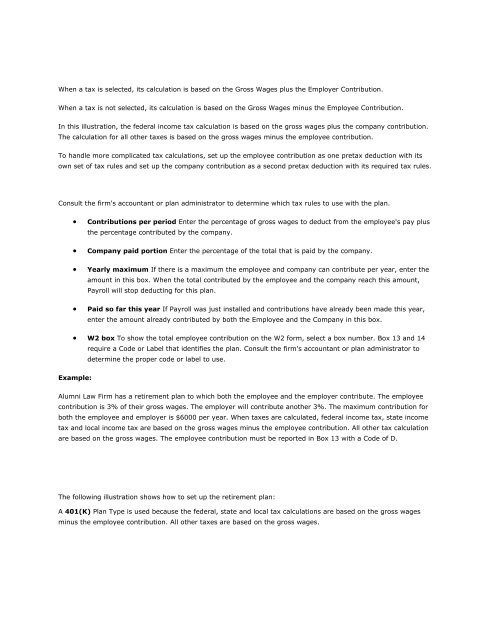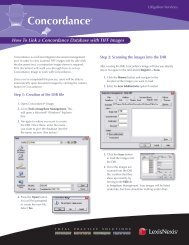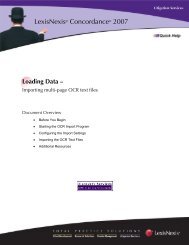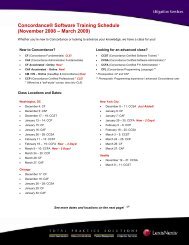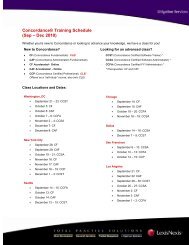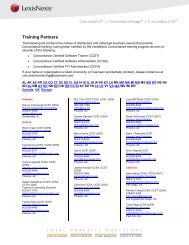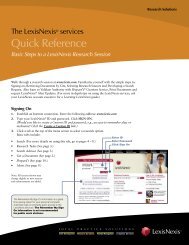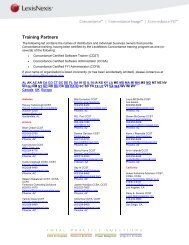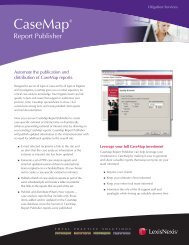Frequently Asked Questions - LexisNexis
Frequently Asked Questions - LexisNexis
Frequently Asked Questions - LexisNexis
Create successful ePaper yourself
Turn your PDF publications into a flip-book with our unique Google optimized e-Paper software.
When a tax is selected, its calculation is based on the Gross Wages plus the Employer Contribution.<br />
When a tax is not selected, its calculation is based on the Gross Wages minus the Employee Contribution.<br />
In this illustration, the federal income tax calculation is based on the gross wages plus the company contribution.<br />
The calculation for all other taxes is based on the gross wages minus the employee contribution.<br />
To handle more complicated tax calculations, set up the employee contribution as one pretax deduction with its<br />
own set of tax rules and set up the company contribution as a second pretax deduction with its required tax rules.<br />
Consult the firm's accountant or plan administrator to determine which tax rules to use with the plan.<br />
• Contributions per period Enter the percentage of gross wages to deduct from the employee's pay plus<br />
the percentage contributed by the company.<br />
• Company paid portion Enter the percentage of the total that is paid by the company.<br />
• Yearly maximum If there is a maximum the employee and company can contribute per year, enter the<br />
amount in this box. When the total contributed by the employee and the company reach this amount,<br />
Payroll will stop deducting for this plan.<br />
• Paid so far this year If Payroll was just installed and contributions have already been made this year,<br />
enter the amount already contributed by both the Employee and the Company in this box.<br />
• W2 box To show the total employee contribution on the W2 form, select a box number. Box 13 and 14<br />
require a Code or Label that identifies the plan. Consult the firm's accountant or plan administrator to<br />
determine the proper code or label to use.<br />
Example:<br />
Alumni Law Firm has a retirement plan to which both the employee and the employer contribute. The employee<br />
contribution is 3% of their gross wages. The employer will contribute another 3%. The maximum contribution for<br />
both the employee and employer is $6000 per year. When taxes are calculated, federal income tax, state income<br />
tax and local income tax are based on the gross wages minus the employee contribution. All other tax calculation<br />
are based on the gross wages. The employee contribution must be reported in Box 13 with a Code of D.<br />
The following illustration shows how to set up the retirement plan:<br />
A 401(K) Plan Type is used because the federal, state and local tax calculations are based on the gross wages<br />
minus the employee contribution. All other taxes are based on the gross wages.


